National
“No public events scheduled”
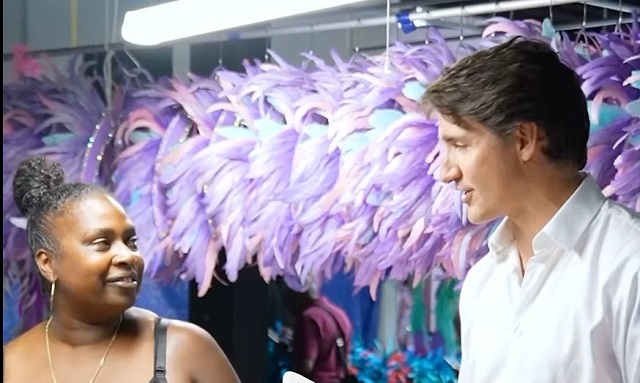
|
|
The PM is on a national campaign tour. He lies about it every day.
Here’s Justin Trudeau at the Saldenah Mas Camp in Toronto on July 18. Volunteers spend months making costumes every year for the Toronto Caribbean Festival. It’s a fantastic tradition. My father, who lived in Barbados for a while, used to drive us up from Sarnia every year for the parade.
The prime minister’s public itinerary, which is emailed daily to members of the Parliamentary Press Gallery and posted on his website, said that on July 18 he’d be in Ottawa for the Change of Command ceremony. It acknowledged no other public event.
The itinerary usually goes out around 7 p.m. each night and lists the PM’s public activities for the next day. Then on the morning of the day, we get an itinerary that either repeats the night-before email, or modifies it. On July 15 the night-before itinerary said the prime minister would be in “Southwestern Ontario” and would have “no public events scheduled” the next day, July 16.
Here’s where it gets a little weird. I never received an itinerary for July 16 that said anything else. The itinerary that went out on the morning of July 16, like the night-before email on the 15th, said “no public events scheduled.” But on the PM’s website, the itinerary that’s there now lists a meeting with Kitchener mayor Barry Vrbanovic.
Later that day, Trudeau was in Scarborough at Junior Carnival. “You could just feel the energy in the air!”, the PM tweeted.
The first I learned of the PM’s meeting with Kitchener mayor Vrbanovic was when reporters received a pool report from a CP reporter, a couple of hours after the meeting ended.
Paul Wells is a reader-supported publication. To receive new posts and support my work, consider becoming a free or paid subscriber.
Pool reports have been used in many countries for many years. If there’s not room for every reporter or photographer who might want to attend, a smaller number are designated, on the understanding that they’ll share their observations and images with everyone who couldn’t go. It’s not great, because typically the pool reporter is not permitted to ask questions.
Sometimes journalists vote to determine who among them will be the pool. Sometimes it’s a Canadian Press reporter, by tradition and convention. In all recent cases with Trudeau, it’s been a CP reporter — because no other news organization except CP has been informed of these events.
There’s also a separate broadcast pool, in which all the broadcast networks participate. That way one camera goes to pooled events, and every network gets the images and audio.
The CP reporter’s account of the Vrbanovic meeting said Vrbanovic “thanked Trudeau for his government’s programs that provide funding to municipalities.” Trudeau “said he will discuss issues that matter to the region including housing and climate change with Vrbanovic.” At this point, “The pool reporter was then asked to leave the room.” I’ll bet she was.
So here’s what I’m here to write about today. This has become standard operating procedure for Justin Trudeau and his staff during the difficult summer of 2024: they claim in public every day that the the PM has “no public events scheduled.” Even though he is in a different city every day. And he has public events scheduled. In fact, he is in the city in question so he can attend the public events he claims aren’t on his schedule.
And a small number of journalists are told, every day, “for information purposes only” — i.e., on the condition that they not tell other journalists or the public — about the public events the PM has scheduled but is lying about.
On Monday Trudeau’s itinerary said he was in “Northern Alberta” and had “no public events scheduled.” Later on Monday he was in Hinton, AB to “get a briefing on the status of the Jasper wildfire, as well as meet with the province’s premier and evacuees who fled the blaze.” I know this because it was in the CP report. “Trudeau did not speak with reporters while he was in Hinton,” the story adds.
I wrote about this on Notes, Substack’s fun short-form social-media platform. A reader responded (and here I paraphrase) that, well, maybe the PM wanted to do serious business in a crisis situation without having to dodge snarky questions from rude reporters. And, you know what? Fair enough.
Thank you for reading Paul Wells. This post is public so feel free to share it.
Share
But here’s the thing. I’ve covered a lot of political leaders in emergency settings. It’s perfectly routine for the advisory to say what a leader will do today, but to say a given event is “Closed to Media.” Or for reporters to be sequestered in a room, well away from the meeting between PM and premier, with time for questions only after the meeting ends.
What’s rarer — what I’d never actually seen before — is for a PM to fly to Alberta, for his staff to say he’s going to be in Alberta, but for them to claim he won’t be doing anything while he’s there.
Incidentally, the version of the PM’s itinerary for Monday that’s on his website now says he had a meeting with Danielle Smith and with emergency responders. This version was never sent to reporters, either before or after the meeting. Absurdly, the itinerary has also been corrected to put Hinton in “Central Alberta” instead of “Northern Alberta.”
A colleague at a large news organization who’s vocationally preoccupied with following politicians’ schedules tells me this has happened “multiple times” in recent weeks: the itinerary on the website gets updated after the fact, in ways that do not reflect what reporters were told in real time. This is the smallest possible routine coverup, for the smallest possible benefit, that I have ever seen.
Pretty soon, news organizations are going to have to start explaining why Justin Trudeau’s summer schedule is so surprising to us.
Here’s Justin Trudeau making a “surprise appearance” at Vancouver Pride on Sunday. Here’s the PM making a “surprise appearance” at Winnipeg’s Filipino Folklorama pavilion on Monday. I’m here to tell you, reporters were not informed of either event — except the ones who were given a quiet heads-up so there’d be cameras on hand. Although how can you be expected to believe me? The PM’s gaslighting website says he “will attend” Pride on Sunday. At least they haven’t rigged the Monday advisory so it retroactively lies about having told us he’d be at the Winnipeg event.
I suspect today’s post will create some buzz, so I want to be careful to say precisely what I mean to say. Politicians are under no obligation to tell anybody how they spend every minute of their day. (It’s worth noting, however, that the public agendas of leaders in other places are sometimes more detailed than in Ottawa: here’s Emmanuel Macron’s and Joe Biden’s agendas for today. The UK’s Keir Starmer seems less forthcoming.) And it’s routine for leaders’ teams to acknowledge calendar events while also emphasizing that the public and journalists can’t attend. What’s an innovation is this business of claiming the PM has nothing “public” on his schedule when he is, in fact, on tour to do public events for which he will seek tightly controlled media and social-media credit.
It’s become entertaining to learn, after the fact, what the hell has been going on. Last week the PM was on vacation in British Columbia. We receive daily itineraries during a vacation, with no public events scheduled, and I don’t begrudge anyone any vacation time. Then he was back in Ottawa for two days, and then he was back in the “Lower Mainland” of BC with “no public events scheduled.” That was Pride, as it turned out. I’m pretty sure that when the big guy was on an airplane for the second time in as many days, he knew why. Eventually so did we.
Since I’ve started making a fuss about this stuff on Notes, I think the PMO is starting to get nervous. Here’s the itinerary we were sent for today, Tuesday, at 7:03 a.m. EDT:
And here’s the updated itinerary we received at 2:33 p.m.
Thanks for the update! Unfortunately, every event in the updated itinerary occurred before the PMO sent it out. When covering your tracks, try not to be so terrible at it. Fortunately the pool report should be landing in my inbox any minute.
I asked Andrea Baillie, the Editor-in-Chief of the Canadian Press, for an explanation of the national newsgathering cooperative’s role in these activities. She replied:
“It’s long been part of CP’s mandate to be with prime ministers as they carry out their duties. Alongside major broadcasters, we provide ‘pool coverage.’ That means we gather details on what the PM said and did on behalf of all press gallery journalists, at events where there is limited space. Typically, the PMO provides embargoed information (i.e. times and locations) on the PM’s schedule on short notice so we can get there on time. The pool is bound by an agreement to use this information for planning purposes only until the events take place, at which point the CP reporter provides details on what they saw and heard in a note sent to all press gallery journalists.”
I want to be clear that I intend no criticism of CP, which has come in for some cheap shots from Pierre Poilievre and others. Reporters who are told of politicians’ activities ahead of time routinely keep this information to themselves, as I have done for politicians from many parties. Including, come to think of it, while covering elections in other countries. It’s the only way to reconcile coverage of an event with politicians’ preference for planning in secrecy. In particular, readers who are quick to dream up heroic scenarios for reporters to act as their proxy to sabotage politicians’ schemes — You should just refuse to cover it! You should just shout your questions until they’re forced to answer! — are typically less thrilled when reporters try that stuff against the politicians they like better.
But reporters are obviously getting played here. When the prime minister of Canada deploys half-way across the country, with his staff photographer and videographers; and then tells hundreds of journalists he’s got nothing planned for the next day or the day dawning; and smaller numbers of journalists already know that’s not true; and then the PM meets public officials or crowds of voters, speaks on public-policy issues, and sends out his own shop’s versions of those conversations and professionally curated images; and then (I can’t believe I’m writing this part) his staff sneaks into the website to cover their tracks ex post facto — well, this is a lake of bullshit so deep I can’t touch bottom, and at the very least, we should let you know it’s going on.
Now watch the commenters under this post line up, like iron filings in a magnetic field, to reveal their polarity.
People who hope the Liberals will win will be furious at me for nitpicking. THIS MAN IS DOING THE BUSINESS OF THE COUNTRY AND YOU JUST WANT TO TEAR HIM DOWN, they’ll say. YOU’RE NO BETTER THAN BOB FIFE. HE’S SMART TO KEEP YOU AWAY FROM SERIOUS WORK.
The ones who wanted him gone years ago will say, AH-HA. THE MAINSTREAM MEDIA IS PLOTTING WITH LIBERALS TO HIDE THE SATANIC PM. YOU HOWLED WHEN POILIEVRE DID FAR LESS, BUT NOW YOU’RE PLOTTING! PLOTTING! WITH YOUR LIBERAL PAYMASTERS.
What’s much rarer will be voters who would actively prefer, say, a Liberal government that doesn’t routinely lie about what its PM is doing. Let me tell you, I sure notice every time a supporter of the Liberals who claims to support the Liberals because they like honest reporting and evidence-based policy suddenly complains about the reporting and evidence that make their guy look bad.
As for Poilievre, I’ve written about his media manipulation at length and, I suspect, will again. These attitudes — good coverage good, bad coverage wicked and worth any artifice to avoid — are widespread and party-agnostic. But it’s worth pointing out that Poilievre now routinely sends out advance notice of his rallies, and has lately been setting aside a few minutes for brief sessions with individual reporters after such events. This one with a Sudbury reporter was chippy but informative; this one with The Gazette’s Aaron Derfel caught Poilievre in a relatively introspective mood.
Mostly I’m not surprised when any public figure avoids scrutiny. Journalistic scrutiny is so rare these days, for reasons I’ve written about at length, that nobody should be surprised when it draws an annoyed and defensive reaction from politicians who view any surprise as an attack. Or, indeed, from anybody at all. “Freedom of the press” loses friends quickly in almost any concrete case.
But again, I’ve never seen this before, a Prime Minister of Canada who demands that his staff enable him as he claims to be taking the summer off even as he’s campaigning for re-election. One more irony: If you’re paying half the salary of most Canadian journalists, even while you’re sending emails to them full of lies about your schedule, you’ve made destroying their credibility a very expensive object of government policy.
Finally, what does all this tell us about the year Justin Trudeau’s having?
I’m not Catholic, but I view this extended fibbing campaign as a venial rather than a mortal sin. It’s mostly kind of baffling.
But it has precedent. In his memoir, Trudeau recollects the times he introduced himself as “Jason Tremblay” or as “Justin St-Clair” as a student or a young adult, to avoid being judged before he could make his case. He learned early how much of himself he wanted others to see.
What’s harder to discern is the point of the artifice. Trudeau gave an extended interview to the CBC days before the disastrous Toronto—St. Paul’s byelection. Within days after the returns from St. Paul’s were in, he adopted this duck-and-cover routine. To what end? Does he seriously hope to pick up 15 points of polling deficit by pushing out Instagram photos of parade floats? Does he think he can keep this up for a year until an election?
While we wait to find out, if I were on the PM’s communications staff and I had pre-existing plans to be working somewhere else in a year, this would be an excellent week to resign, because this week you’d get to do it on principle.
I hear the PM will be in St. John’s tomorrow. Tonight we’ll see whether it’s on the itinerary. For the full experience, subscribe to Paul Wells.
For the full experience, subscribe to Paul Wells.
Banks
Debanking Is Real, And It’s Coming For You
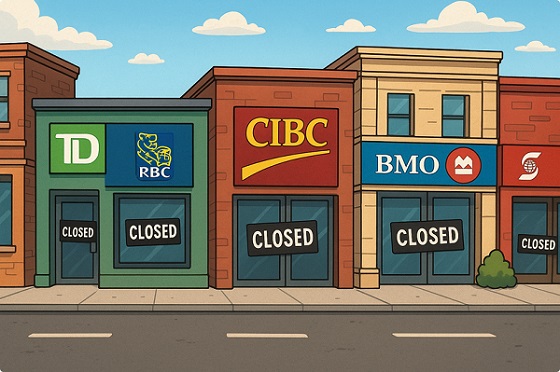
From the Frontier Centre for Public Policy
Marco Navarro-Genie warns that debanking is turning into Ottawa’s weapon of choice to silence dissent, and only the provinces can step in to protect Canadians.
Disagree with the establishment and you risk losing your bank account
What looked like a narrow, post-convoy overreach has morphed into something much broader—and far more disturbing. Debanking isn’t a policy misfire. It’s turning into a systemic method of silencing dissent—not just in Canada, but across the Western world.
Across Canada, the U.S. and the U.K., people are being cut off from basic financial services not because they’ve broken any laws, but because they hold views or support causes the establishment disfavors. When I contacted Eva Chipiuk after RBC quietly shut down her account, she confirmed what others had only whispered: this is happening to a lot of people.
This abusive form of financial blacklisting is deep, deliberate and dangerous. In the U.K., Nigel Farage, leader of Reform UK and no stranger to controversy, was debanked under the fig leaf of financial justification. Internal memos later revealed the real reason: he was deemed a reputational risk. Cue the backlash, and by 2025, the bank was forced into a settlement complete with an apology and compensation. But the message had already been sent.
That message didn’t stay confined to Britain. And let’s not pretend it’s just private institutions playing favourites. Even in Alberta—where one might hope for a little more institutional backbone—Tamara Lich was denied an appointment to open an account at ATB Financial. That’s Alberta’s own Crown bank. If you think provincial ownership protects citizens from political interference, think again.
Fortunately, not every institution has lost its nerve. Bow Valley Credit Union, a smaller but principled operation, has taken a clear stance: it won’t debank Albertans over their political views or affiliations. In an era of bureaucratic cowardice, Bow Valley is acting like a credit union should: protective of its members and refreshingly unapologetic about it.
South of the border, things are shifting. On Aug. 7, 2025, U.S. President Donald Trump signed an executive order titled “Guaranteeing Fair Banking for All Americans.” The order prohibits financial institutions from denying service based on political affiliation, religion or other lawful activity. It also instructs U.S. regulators to scrap the squishy concept of “reputational risk”—the bureaucratic smoke screen used to justify debanking—and mandates a review of past decisions. Cases involving ideological bias must now be referred to the Department of Justice.
This isn’t just paperwork. It’s a blunt declaration: access to banking is a civil right. From now on, in the U.S., politically motivated debanking comes with consequences.
Of course, it’s not perfect. Critics were quick to notice that the order conveniently omits platforms like PayPal and other payment processors—companies that have been quietly normalizing debanking for over a decade. These are the folks who love vague “acceptable use” policies and ideological red lines that shift with the political winds. Their absence from the order raises more than a few eyebrows.
And the same goes for another set of financial gatekeepers hiding in plain sight. Credit card networks like Visa, American Express and Mastercard have become powerful, unaccountable referees, denying service to individuals and organizations labelled “controversial” for reasons that often boil down to politics.
If these players aren’t explicitly reined in, banks might play by the new rules while the rest of the financial ecosystem keeps enforcing ideological conformity by other means.
If access to money is a civil right, then that right must be protected across the entire payments system—not just at your local branch.
While the U.S. is attempting to shield its citizens from ideological discrimination, there is a noticeable silence in Canada. Not a word of concern from the government benches—or the opposition. The political class is united, apparently, in its indifference.
If Ottawa won’t act, provinces must. That makes things especially urgent for Alberta and Saskatchewan. These are the provinces where dissent from Ottawa’s policies is most common—and where citizens are most likely to face politically motivated financial retaliation.
But they’re not powerless. Both provinces boast robust credit union systems. Alberta even owns ATB Financial, a Crown bank originally created to protect Albertans from central Canadian interference. But ownership without political will is just branding.
If Alberta and Saskatchewan are serious about defending civil liberties, they should act now. They can legislate protections that prohibit financial blacklisting based on political affiliation or lawful advocacy. They can require due process before any account is frozen. They can strip “reputational risk” from the rulebooks and make it clear to Ottawa: using banks to punish dissenters won’t fly here.
Because once governments—or corporations doing their bidding—can cut off your access to money for holding the wrong opinion, democracy isn’t just threatened.
It’s already broken.
Marco Navarro-Genie is vice-president of research at the Frontier Centre for Public Policy and co-author, with Barry Cooper, of Canada’s COVID: The Story of a Pandemic Moral Panic (2023).
Crime
While Canadian police remain hesitant, U.S. Targets Cartels Abroad as Sinaloa’s Reach Spans 40 Nations

DEA leader tells The Bureau that while Trump’s cartel extraditions with Mexico demonstrate significant collaboration, Canadian police remain hesitant partners in the fight against fentanyl networks
The Drug Enforcement Administration says it has dealt a sharp blow to the Sinaloa Cartel — which is embedded in about 40 nations outside Mexico — after a week-long surge of operations across the United States and abroad that netted more than 600 arrests and the seizure of massive quantities of fentanyl, methamphetamine, cocaine, and cash.
From August 25 through August 29, DEA agents in 23 domestic divisions and seven international regions coordinated what officials described as one of the most significant enforcement pushes against the cartel in recent years, the agency announced yesterday.
The operation comes six months after the Trump administration designated the Sinaloa Cartel and seven other groups as foreign terrorist organizations, a move that heightened both legal pressure and political attention on the networks blamed for fueling the U.S. fentanyl crisis.
The crackdown produced 617 arrests, more than $11 million in currency seizures, and 420 firearms, alongside a cache of synthetic and traditional narcotics that investigators say could have fueled untold overdoses nationwide.
The seizures included 480 kilograms of fentanyl powder, more than 714,000 counterfeit pills, 2,200 kilograms of methamphetamine, nearly 7,500 kilograms of cocaine, and over 16 kilograms of heroin.
“Every kilogram of poison seized, every dollar stripped from the cartels, and every arrest we make represents lives saved and communities defended,” Administrator Terrance Cole said. His agency’s statement asserted there are tens of thousands of Sinaloa members, associates, and facilitators operating worldwide — in at least 40 countries — who are responsible for the production, manufacturing, distribution, and operations related to trafficking deadly synthetic drugs.
His predecessor, former DEA chief Derek Maltz, told The Bureau in an exclusive interview that President Trump has achieved unprecedented extraditions from Mexico, bringing dozens of senior cartel leaders into U.S. custody.
Maltz recounted being at Dulles Airport as military flights delivered figures such as Los Zetas bosses Miguel and Omar Treviño and the Sinaloa kingpin Rafael Caro Quintero, wanted for the murder of DEA agent Kiki Camarena. “We’ve never seen that kind of result,” Maltz said, adding: “What’s happening is that we are seeing a drastic reduction in fentanyl seizures at the U.S. southern border. They’re pretty much cut in half over the last several months, which to me is a strong indicator of, number one, the production has gone down. And the cartels are clearly concerned about the optics and the deaths of Americans.”
But alongside the successes on extradition and southern border clampdowns, Maltz said, cartels are adapting. They are now pushing mass shipments of cocaine and synthetic drugs into and through other regions — notably Canada, which retains a geographic advantage for traffickers. Product moves by sea from China and Mexico up the coast into Vancouver, and via Canadian commercial trucks that collect cocaine and methamphetamine shipments from Mexican suppliers in California while also delivering fentanyl precursors from Vancouver to Los Angeles, according to a recent indictment targeting Indo-Canadian Vancouver gangs and Chinese suppliers.
“The cartels are definitely concerned about the optics and the deaths of Americans,” Maltz said. “But they’re not out of business — they’re pivoting to the global cocaine market, and they’re still producing meth in industrial labs.”
On the controversy in Canada — whether superlabs run by Mexican cartels are sending significant amounts of fentanyl or its precursors across the northern border, and whether Canadian police have failed to cooperate with U.S. enforcement, as President Donald Trump has charged — Maltz said Canadian denials ignore the reality of the networks involved.
“First of all, you don’t know what you don’t know. There’s so much wide-open border between Canada and the United States,” he told The Bureau. “I was the guy around 2006 when I ran the Special Operations Division. I invited the RCMP to come in and operate with us because at that time we started seeing massive cocaine movements up the West Coast of the United States into Canada. And we saw at that time gangs like the Hells Angels and others that were doing a lot of the distribution of mass amounts of cocaine for cartels. So we wanted to collaborate with the Mounties.”
Maltz recalled embedding Canadian officers in what became a growing international hub for cross-border enforcement. “We put somebody right in the middle of our synchronization center.”
But progress, he said, has remained halting. “Even when — I think it was February or March with the commissioner of the RCMP and his executive staff — I mean, they were very nice and they were trying to establish relationships again with the DEA. But it’s almost like Groundhog Day. They have to produce results. They have to demonstrate that commitment by action, not by words, not by get-togethers in one of these countries in the embassies and drinking tea or coffee. It’s about action to shut down these cartels. And I haven’t seen a lot of that.”
-

 Censorship Industrial Complex11 hours ago
Censorship Industrial Complex11 hours agoFreedom of speech under threat on university campuses in Canada
-
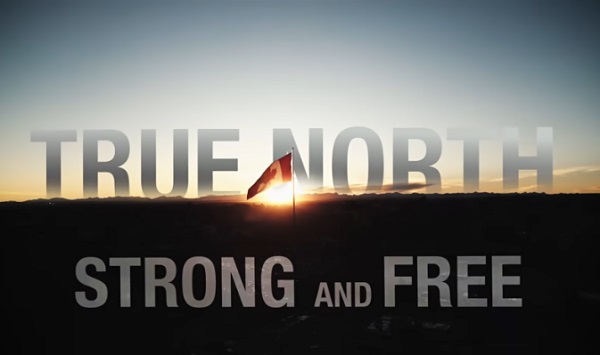
 Alberta6 hours ago
Alberta6 hours agoOttawa’s destructive federal energy policies and Premier Danielle Smith’s three part solution
-

 Business11 hours ago
Business11 hours agoCarney engaging in Orwellian doublethink with federal budget rhetoric
-
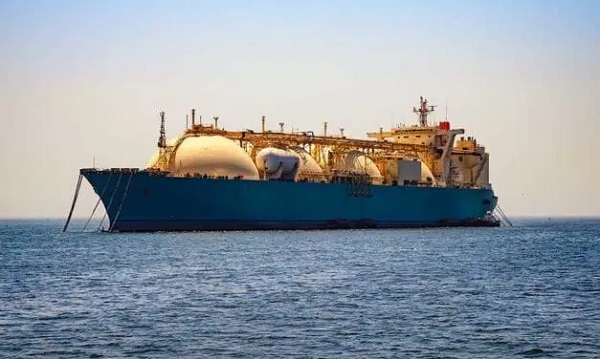
 Energy11 hours ago
Energy11 hours agoCanada’s LNG breakthrough must be just the beginning
-

 Alberta7 hours ago
Alberta7 hours agoIs Alberta getting ripped off by Ottawa? The numbers say yes
-
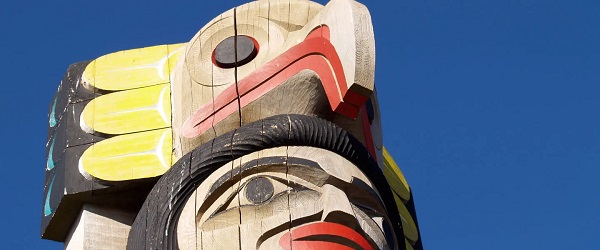
 Business12 hours ago
Business12 hours agoCourt’s ‘Aboriginal title’ ruling further damages B.C.’s investment climate
-
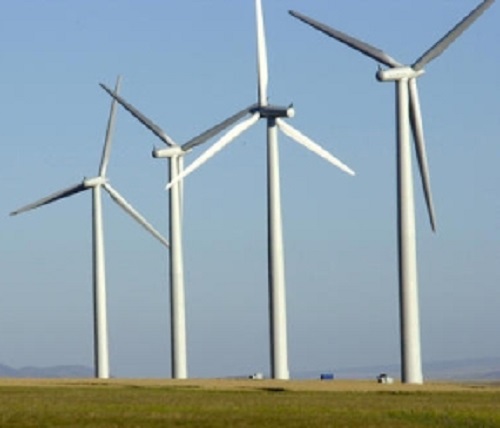
 Agriculture5 hours ago
Agriculture5 hours agoIn the USA, Food Trumps Green Energy, Wind And Solar
-

 Canadian Energy Centre4 hours ago
Canadian Energy Centre4 hours agoEmissions cap will end Canada’s energy superpower dream








